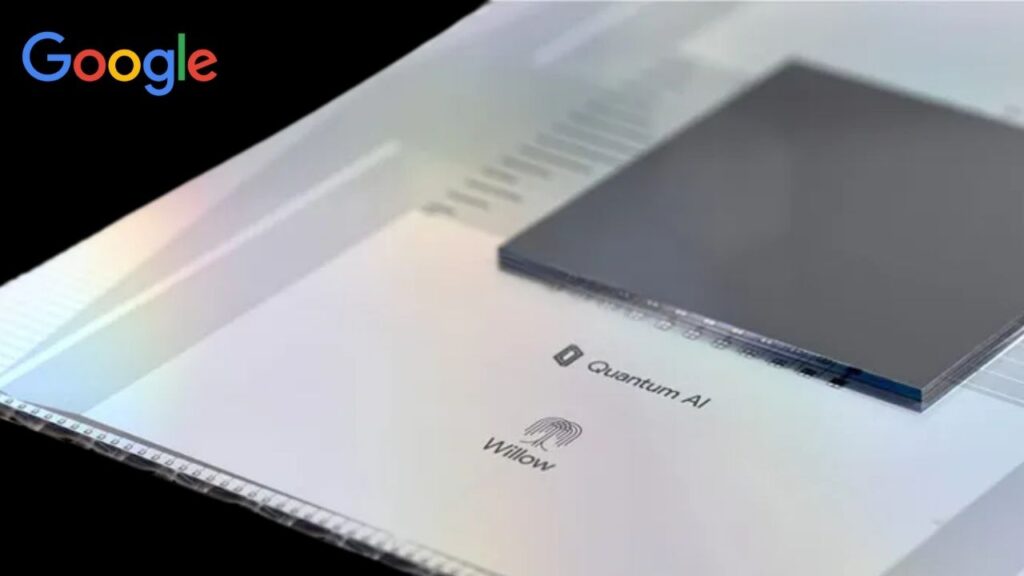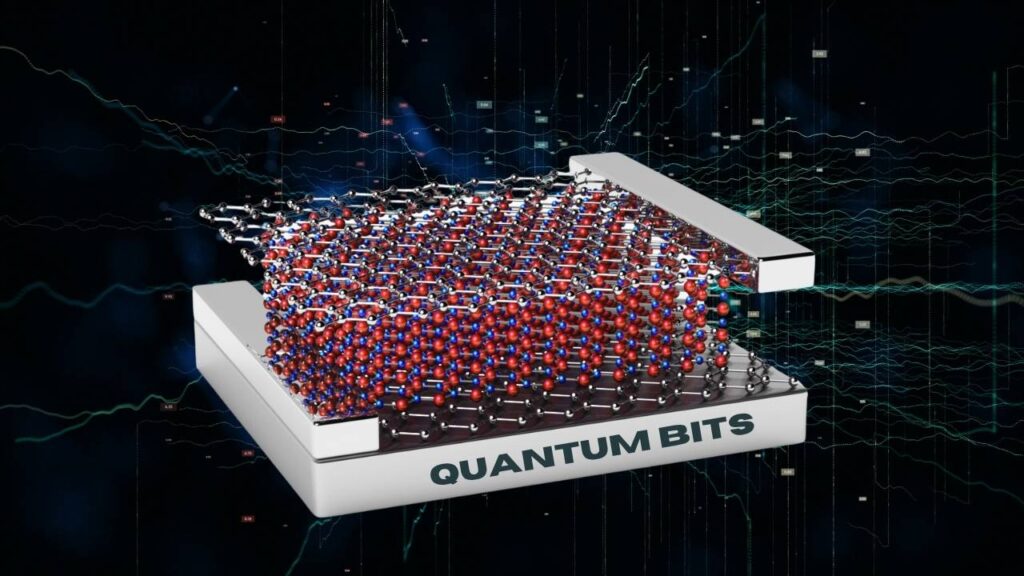Google’s Willow Chip Dramatically Cuts Error Rates: Quantum computing has been the talk of the tech world for years, but in late 2024, Google’s Willow chip changed the game.

This state-of-the-art quantum processor not only slashed error rates but also performed calculations in minutes that would leave even the world’s fastest supercomputers in the dust for eons. If you’re a tech enthusiast, a professional, or just a curious mind, buckle up—this is one wild ride into the future of computing.
Google’s Willow Chip Dramatically Cuts Error Rates
| Feature/Fact | Details |
|---|---|
| Chip Name | Willow |
| Qubit Count | 105 (double the previous generation) |
| Error Correction | Exponential reduction as more qubits are added |
| Benchmark Achievement | Solved a problem in <5 minutes; would take a supercomputer 10 septillion years |
| Industry Impact | Drug discovery, AI, energy optimization, cryptography |
| Fabrication | Built in Santa Barbara, CA, at Google’s new facility |
| Official Website | Google Quantum AI |
Google’s Willow chip is a quantum leap (pun intended) in computing. By dramatically reducing error rates and solving problems in minutes that would take supercomputers longer than the universe’s lifespan, Willow is paving the way for a new era of technology. Whether you’re a student, a pro, or just a tech fan, now’s the time to get quantum curious—because the future is here, and it’s wild.
What Is the Willow Chip? (And Why Should You Care?)

Let’s break it down in plain American English: Willow is Google’s latest and greatest quantum chip, packing 105 qubits—that’s double what their last chip, Sycamore, could handle. Qubits are the building blocks of quantum computers, and they’re way different from the ones and zeroes you hear about in regular computers. Thanks to quantum weirdness, qubits can be in multiple states at once, letting quantum computers crunch numbers like nothing else on Earth.
But here’s the kicker: Quantum computers are super sensitive. Even a tiny disturbance can mess up their calculations. That’s why error correction is such a big deal. Willow doesn’t just add more qubits—it uses them smarter, cutting down errors exponentially as you scale up. That’s a breakthrough the quantum world has been chasing for almost 30 years.
How Does Willow Work? (The Nitty-Gritty, Made Simple)
Willow uses superconducting transmon qubits—tiny circuits that act like artificial atoms when cooled to just above absolute zero. This ultra-cold environment keeps the qubits stable and ready to work their quantum magic.

Here’s why Willow rocks:
- Error Correction: As you add more qubits, errors drop off fast. That’s like adding more players to your basketball team and suddenly missing fewer shots.
- Speed: Willow solved a benchmark problem in under five minutes. A classical supercomputer? Try 10 septillion years. Yeah, that’s a 1 with 25 zeros after it—longer than the universe has existed!
- Stability: Willow’s qubits can hold their quantum state for nearly 100 microseconds—five times longer than previous chips. That’s a big deal for getting accurate results.
Why Is This a Big Deal? (Real Talk)
Quantum computing isn’t just for science fiction anymore. With Willow, Google has shown that quantum computers can finally beat classical ones at certain tasks—and do it reliably. This is the first real taste of “quantum supremacy,” where quantum machines do things that are impossible for regular computers.
Here’s what this means for you and the world:
- Drug Discovery: Imagine finding new medicines in days instead of years. Quantum computers can simulate molecules and reactions way faster, helping scientists develop cures for diseases quicker.
- AI and Machine Learning: Quantum chips like Willow can process massive data sets and train smarter AI models, making everything from voice assistants to self-driving cars better.
- Energy and Climate: Quantum computing could help optimize power grids, design better batteries, and even model climate change more accurately.
- Cybersecurity: Quantum computers can crack some of today’s toughest codes—but they can also help build new, stronger encryption to keep your data safe.
Step-by-Step: How Willow Is Changing the Game
1. Building the Chip
Google built Willow in their new Santa Barbara facility, using cutting-edge techniques to make sure every part—from the qubits to the connections—works perfectly together.
2. Error Correction Mastery
Willow’s biggest trick is using more qubits not just for power, but for accuracy. It’s like having a bigger team that also plays smarter, not just harder.
3. Benchmarking the Beast
Google put Willow through the toughest test in the business: Random Circuit Sampling (RCS). Willow smoked the competition, solving a problem in minutes that would take regular computers longer than the age of the universe.
4. Real-World Applications
From healthcare to finance, Willow’s tech is already being eyed for solving problems that used to be out of reach.
5. Looking Ahead
Willow isn’t just a one-off. It’s a sign that quantum computers are finally ready to tackle real-world challenges, and Google’s already working on scaling up for even bigger breakthroughs.
Practical Advice: How to Get Involved
- Students & Professionals: Start learning quantum computing basics. Google offers courses on quantum error correction—check out their official resources.
- Businesses: Keep an eye on quantum-ready applications, especially in data-heavy fields like logistics, finance, and healthcare.
- Researchers: Dive into Google’s published research and blog posts for the latest updates and technical deep-dives.
- Everyone: Stay curious! Quantum computing is moving fast, and the next big leap could change your industry overnight.
NTT Docomo Uses Quantum Optimizer to Boost 5G Resource Efficiency by 15%
IonQ To Acquire Oxford Ionics For ~$1.1 B, Expanding Trapped‑Ion Leadership
Quantum Sensor Tracks 3D Movement Without GPS Using Ultracold Atoms
FAQs About Google’s Willow Chip Dramatically Cuts Error Rates
Q: What is a qubit?
A: A qubit is the basic unit of quantum information. Unlike a regular computer bit (which is either 0 or 1), a qubit can be 0, 1, or both at the same time, thanks to quantum superposition.
Q: Why does error correction matter in quantum computing?
A: Quantum computers are super sensitive to noise and disturbances. Error correction helps keep calculations accurate, making quantum computers more reliable and useful.
Q: How fast is Willow compared to regular computers?
A: Willow solved a benchmark problem in under five minutes that would take the fastest classical supercomputer 10 septillion years—longer than the universe has existed!
Q: What are some real-world uses for Willow?
A: Drug discovery, AI, energy optimization, cryptography, and climate modeling are just a few areas where Willow’s power can make a difference.
Q: Can I use Willow today?
A: Right now, Willow is mostly used for research and development within Google Quantum AI, but the technology is moving fast, and broader access is on the horizon.






